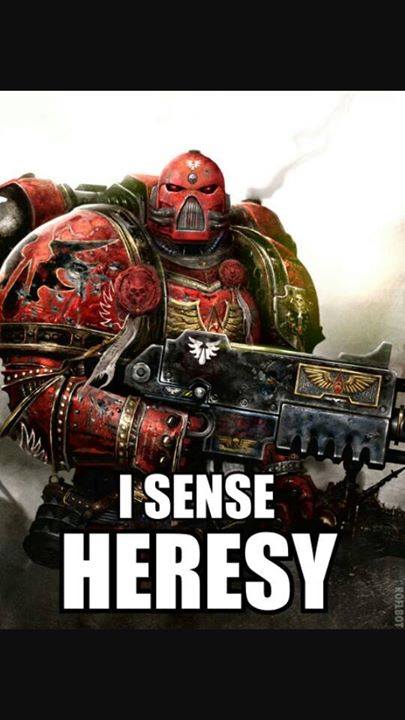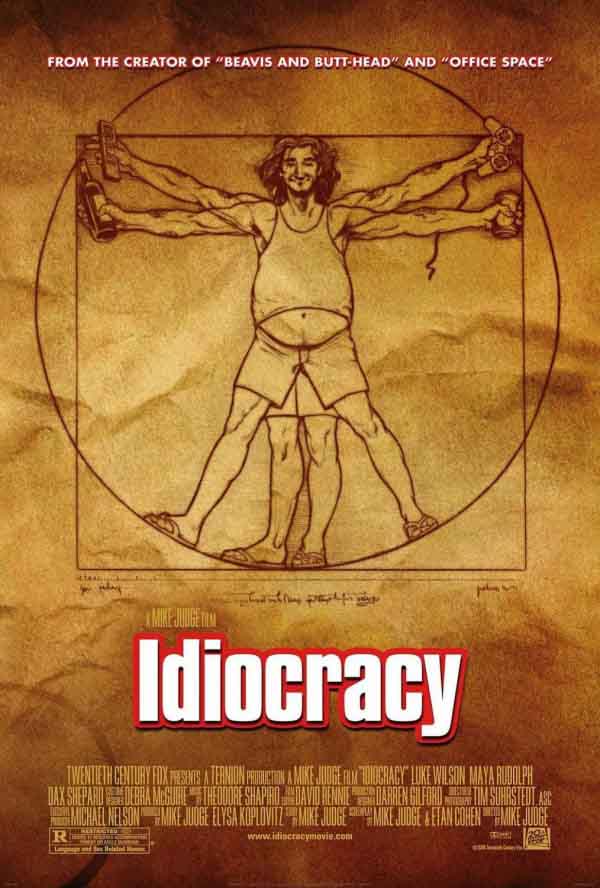Two of the most pervasive topics in metal are the “underrating” and the “overrating” of a band or album. Given that most people are prone to confuse their emotional attachment to music with a sign of its quality, most of these claims are specious complaints that reflect the need for acknowledgement from other people as a fan more than anything else. Claims of “underratement” usually occur in regards to cult bands, and less often, to personal favorites that should be recognized by each fan as a mere guilty pleasure. Statements of “overrating”, then, comprehensibly come about when a disgruntled fan wants to bash any band that does not appeal to him, independently of the reason.
However, when leveled as a result of balanced, informed and insightful judgement, these observations become meaningful in that they have solid foundation and a motivation outside selfish emotional need for attention. Contrary to popular opinion, these arguments only need to be based on objective observations but need not be objective in the full sense of the word themselves. The reason for this is that the concepts of objectivity and subjectivity represent a false dichotomy inapplicable in the context of art appreciation. Appreciation rests outside any single preference, it always lies outside the emotional reaction of any one person, but is nonetheless attached to a social group’s set of principles. And principles are a human construct, not tangible, objective reality. In other words, it entails the individual perception through the lenses of convention of objectively observed qualities.
Art appreciation can be reduced to the appreciation of beauty. The concept of beauty has always been a complicated one, and like anything complicated, it gets reduced to the absurd by small minds that feel the need to fool themselves into believing they have everything under control. A sense of what is beautiful rests on what is considered to be good taste. The nature of both beauty and taste is neither objective nor subjective. If it were objective, beauty would be a hard, flat fact measurable by scientific instruments, and not the esoteric – perhaps mystical – sign existing completely and individually in meaning, perception and medium but also in the whole of an object, all at the same time. A divine omnia in omnibus, as it were, perceptible to the unconscious but only vaguely grasped by the conscious as an ethereal idea. The duality that implies being human, having one eye on time and the other on eternity. On the other hand, if it were subjective, it would be completely pointless to talk about beauty or taste, as these would be demoted to euphemisms for what is simply our personal preference.
It is therefore, unsurprising that beauty is sometimes linked to the presence of the divine, and therefore of that which is natural, full of meaning and in balance. Again, simplified misconceptions come to distort each of these and in an increasingly individualist society that is just so for the sake of individualism itself, renders them powerless, trapped in small containers as catchwords for egotistical affectations. In other words, beauty has indeed been stripped from its cosmic framework and taste has become personal rather than communal. Both have lost any of the usefulness they had for communication of hermetic meaning.
This egotistical individualism is deeply entrenched in group-oriented thinking, paradoxically self-indulging as it is unoriginal and lacking in personal identity. This is to be expected since unthinking compliance to the system goes hand in hand with a deep-rooted cowardice of the mind. So, taking refuge in the rise of science, humanism and tacit nihilism, our brave new world does away with meaning as it has forgotten why man created it in the first place. Our modern society, contemptibly lacking in any courage to face reality and the pressing matters of our times, turns away from an understanding of the transcendent in favor of self-validation.
Art and its appreciation suffer first in this headlong plunge into the shadows. The reason for this is that art (artificial) arises entirely from man-given meaning. The greatest art has always had the power to communicate and bring forth an awareness of enduring meaning through individually-perceived universal truths of the human condition. Forsaking the use of any actual meaning in beauty, and consequently in art, music becomes a vulgar tool for individual satisfaction.
While quiet deference is directed towards names like Yes, King Crimson, Black Sabbath, Slayer, Bathory or Morbid Angel, my experience tells me that most fans who hold these bands in some kind of respect do not understand half of the reasons why these bands are great. The case of directly disrespected and underrated but equally excellent art like that of selected works of Burzum or early At the Gates is a different although related matter into which I will not go here. In the meantime, let’s turn our attention to canonical works of the metal underground.
It seems rather unfortunate that after achieving canonical status in any genre, a classic work is condemned to be defiled in two stages. The first is one in which the cause and effect relationship between being a classic and achieving canonical status is not inverted but flattened, the popular conception of the relationship between the terms being one of equality and interchangeability. Something then happens as a direct consequence of this misunderstanding along with an ignorance of the nature of classical works at several levels. In this second stage the distorted image of what being a canonical work implies is rightly questioned, resulting in an at least partial repudiation of their validity. The term classic is then also demoted into a euphemism for “what many/most people like”. Equating popularity with quality in art is a direct consequence of the loss of meaning discussed earlier.
This is why it is important to clarify what is originally meant by classical. It is closest to the condition of being an epitome, except that this latter term is neutral and can signify an accurate representation of the qualities of a group or classification. Classical refers to the highest degree of excellence in regards to quality, which implies distinction, perfect balance and adequacy in a work within its genre. Disquieting as the perversion of this concept is, simple and effective education coupled with the audience’s willingness to let go of their ego would be enough to remedy this situation. As with many things, it is easier said than done.
An additional third stage also bears mentioning which can then be appended to the steps in the process of decay in the perception of classic works. After the flattening and disavowal of the aforementioned terms has taken place in the collective mind, a confusion ensues which brings forth the nominating of undeserving artists or works into what used to be a pantheon of the gods. As I see it, there are two main ways in which this happens. The first was already mentioned, very popular works are inserted into the lists by virtue of their popularity itself. The other is the result of the backlash classic works receive from the lack of understanding towards their classic status. The original and true classics are reduced by a narrow-minded audience with a lack of depth perception to a collection of tropes to be imitated. A collateral effect of this in metal is that after a certain amount of time, since the audience cannot understand what a classic actually is, seniority is equated with relevance and quality, and then novelty is equally mistaken for innovation.
Without control or awareness, these things happened lightning-fast in progressive rock and metal, accounting for the extremely fast evolution of metal genres running away from the mainstream limelight and into increasingly obscure territories. Giants like King Crimson, Yes, Emerson Lake & Palmer and Genesis were then piled up with second-raters from all over the world. Nowadays it is customary to see Rush, Camel or Jethro Tull mentioned besides the first. Childish and musically wanting works belonging to the catalogues of Schuldiner’s Death and Cannibal Corpse even take precedence over the monumental early Morbid Angel. A closer and more knowledgeable and perceptive look into the qualities of their works reveals an enormous chasm in musical excellence and refinement separates them. They belong to completely different worlds.
Metal is encumbered by an additional hindrance: a recurrent appeal to cavemanish foolishness by the audience. This is the belief that as an essentially underground movement, metal is a blue-collar music which needs to be kept rough, dirty, mean and, well, ignorant. It is a combination of something similar to communism’s appeal to the true sense of the young masses and the testosterone posturing of a macho Homer Simpson. This idiotic claim basically consists in the stereotype that metal’s nature resides in young and unlearned spirit which yearns for adventure, rebellion and hedonism. They do not realize that these are closer to the hippie ideals than to the true metal spirit which actually resides in a warrior’s mysticism that stares reality in the face without losing sight of the transcendent.
While metal needs to grow up and continue in its journey towards higher peaks, it must do so through a profound understanding of its roots and thereby a correct appreciation of its own classics and an embracing of its core and true ideals. The mainstream would have metal become a compliant rock music in disguise, an edgy but safe expression of castrated dissent. Absorbing or becoming other genres is not progress, it is only regression or distraction. This must be rejected at all costs and a unique path into the maturity of the genre must take place in a truly forward-looking but conservative manner. Metal has always made its most significant strides in those albums which on the surface seemed orthodox but which brought meaningful innovation at the level of musical thinking, information and communication. It was not the experimentalists who revel in the strange, the unexpected and the new, but the disciplined adherents to the tenets of metal who look for their own voice while keeping the spirit of Vir at the heart of the music who move metal forward.
12 CommentsTags: art appreciation, beauty, Black Metal, brave new world, classics, death metal, On The Underrating of Recognized Classics, overrated, underground metal, underrated




